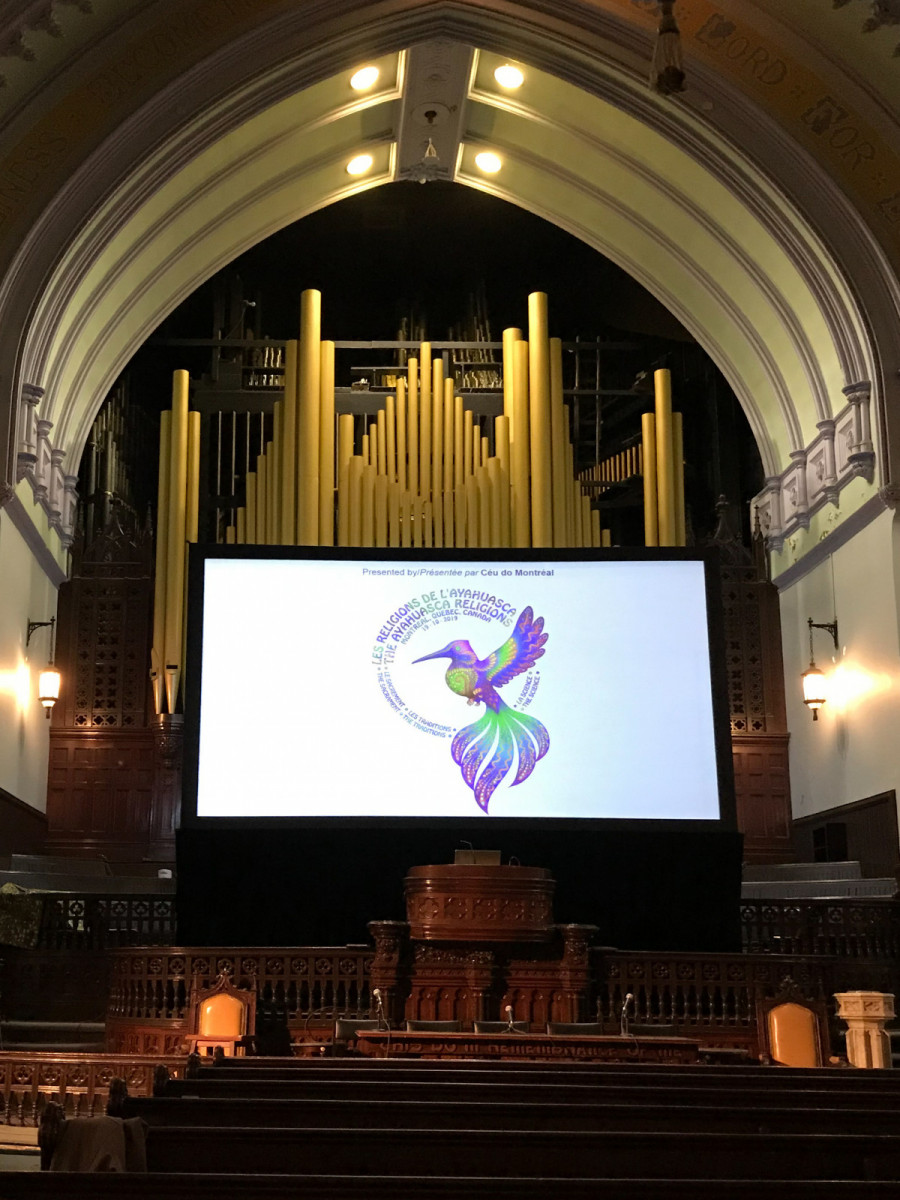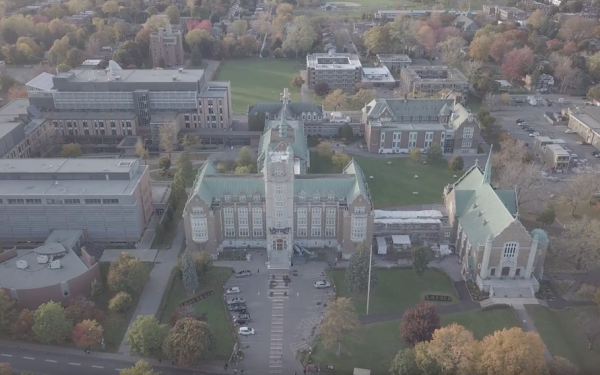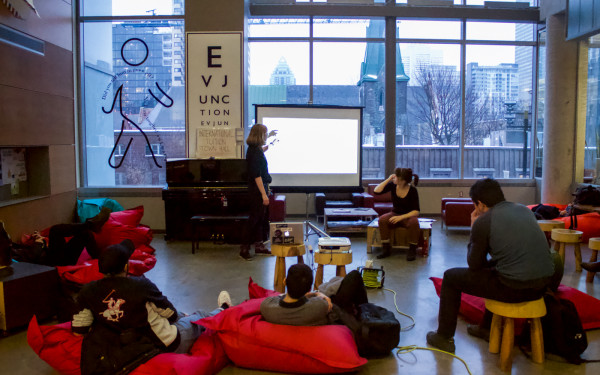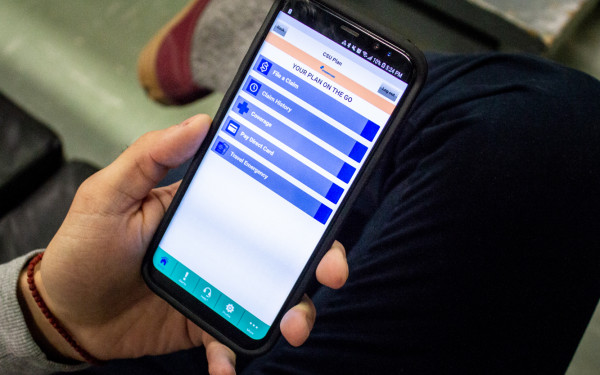Can Ayahuasca Save The World? What I Learned at the 2019 Ayahuasca Conference
Six Scientists Argue Ayahuasca Can Be a Powerful Healer
When I set foot into the downtown St. James United Church, along with hippies, psychonauts, students, and researchers of all ages for the Ayahuasca Religions Conference 2019, I was ready to be enlightened.
The conference promised to bring forward spiritual and scientific arguments on benefits of the ritual use of the psychedelic substance ayahuasca in healing ceremonies led by certified shamans. And it delivered. They shed light on the religious and traditional uses of ayahuasca, the science backing up its claim to be able to heal the world, and the presence of the substance in Canada.
The conference strongly emphasized the role of Indigenous peoples in developing these rituals, highlighted the traditional Indigenous knowledge behind ayahuasca use, and that the conference is taking place on Kanien’kehá:ka, or Mohawk land.
As everyone piled into the church—which, unsurprisingly, was undergoing heavy construction—to the sound of harps, the colourful fractal patterns on the stained glass seemed almost psychedelic and gave everything a soft glow.
As we waited for the first speaker to present, I chatted with the people next to me. One of them had recently received the ritual ayahuasca sacrament, led by a shaman. He said it was one of the most intense, healing, and eye-opening experiences of his life—explaining it helped him open his mind and expanded his consciousness.
His friend said she had been too afraid of trying it, despite previous psychedelic experimentation, to which he replied, “As you should be.” But, they were both curious as to what else the substance has to offer—and who knows, maybe she’ll decide to take the sacrament.
I knew I would love this conference as soon as Rev. Dr. Jessica Rochester started lecturing on consciousness, change, the ego, culture, and holistic spirituality. As a religious studies double major, this is my wheelhouse. Mestre Jeffrey Bronfman, Dr. Paul Grof, Dr. Marc Blainey, Dr. Ken Tupper, and Dr. Brian Rush accompanied her as speakers.
All speakers have been doing research, and pushing to be able to continue their research, on the scientific benefits of ayahuasca combined with the spiritual. They all have come to the same conclusion: the plant is a healer that can be an incredible and life-saving medicine.
Bronfman said ayahuasca can “help us build a better world of love and solidarity.”
The program I was given said, “This conference […] represents a message from the sacred plants, the Santo Daime, also known as Ayahuasca. There is a longing and a need for the awakening of consciousness to assist in the restoration of health and wholeness for each of us, for nature, and for our Mother Earth.”
Ayahuasca is a potent psychedelic brew made from the Banisteriopsis caapi vine and other plants. Its main psychoactive properties come from dimethyltryptamine, also known as DMT, which it found in Psychotria viridis shrubs. The brew requires monoamine oxidase inhibitors, or MAOIs, to be active in tea form, which is present in the B. caapi. It’s mainly found in the Amazonian region of Brazil and northern South America.
Ayahuasca users report having mystical experiences, spiritual revelations about their purpose in the world and the nature of the universe, and other deeply life-changing realizations and powerful visual hallucinations. Some see extra-dimensional entities who bring forth messages, or even dancing elves. It also creates a deep sense of being connected to nature and other humans. Many who have participated in ayahuasca rituals say it’s like being reborn.
Rush has been doing research on the use of ayahuasca among those struggling with addiction. He said that ayahuasca has nearly zero toxicity, no addiction potential, and has not been seen to cause neurocognitive decline in people who have used ayahuasca on a monthly basis for decades. For these reasons, it could have major potential in psychedelic-assisted therapy.
Rush said the dissolution of the ego and the idea that there is a transcendent force in the universe—yes, even for atheists—lead to people feeling connected to the world. He said one of his patients told him, “I felt more connected [after taking ayahuasca]. Alcohol didn’t matter to me anymore.” Rush added the feeling of having a purpose in this world leads to people feeling valid in their existence.
Ayahuasca has shown to help with depression, anxiety, post-traumatic stress disorder, and eating disorders as well. One attendee works as a medical practitioner and was hoping to eventually bring up the possibility of using ayahuasca in her practice.
But, Rush stressed the natural and spiritual components are essential. In the past, clinicians have been able to extract psilocybin from hallucinogenic mushrooms and put them in capsule form, along with LSD. He added he doesn’t believe this is necessarily the best approach, as plants are meant to be natural healers.
The speakers stressed that ayahuasca must be used responsibly and is not to be taken recreationally. Those who work with ayahuasca go through intensive training and supervision before being able to lead rituals and make sure those who participate stay in a safe set and setting.
Rochester said modern science is proving what Indigenous people have believed for centuries. She said Mother Nature is hurting, and we aren’t waking up to this reality quickly enough. So, Rochester said, Mother Nature provided us with the ayahuasca plants to get her message across. She said the plants open us up to the deepest parts of ourselves: the good, the bad, the ugly. It can bring difficult memories and feelings to the surface, but through the ritual guided by a shaman, people can work through these and heal.
“To fall in hell or reach the angelic, you need a touch of psychedelic,” said Grof.
To fall in hell or reach the angelic, you need a touch of psychedelic.
— Paul Grof
That being said, ayahuasca tourism can be problematic. Not everyone claiming to be a shaman is properly trained.
It’s important to maintain good relationships with the Indigenous peoples who use the plant as well. It also raises ethical questions, as illegal ayahuasca retreats can be very costly and corrupt. There have been cases of people passing away at Peruvian ayahuasca retreats.
Rochester first found ayahuasca in Brazil and started bringing the tea back to Canada with her. From 2001 to 2017, she pushed for the recognition of the Santo Daime as a legitimate religion and for the right to import ayahuasca for ritual use with Health Canada. In June 2017, her church, Céu do Montréal, received an exemption to import and serve the Santo Daime Sacrament as part of her religious freedom.
I started feeling skeptical about the mass-harvesting that would be needed to bring ayahuasca to western medicine. How sustainable can a clinical model really be?
Peyote tourism, which centres on the psychedelic mescaline-containing cactus, has made that plant vulnerable, with its population decreasing. Another example is bufotenin, a potent psychedelic found in Sonoran Desert toad venom. Since these toads were coveted by poachers, they became harder to find. This led scientists to synthesize bufotenin—which led to the creation of 5MEO-DMT, a substance with more risks.
So, what can be done to ensure the sustainability of such an important plant?
When I asked, Rochester told me the churches she visited in Brazil have very strict regulations, as does her church. But, there has been illegal harvesting of the vines deep in the Amazon, so it’s hard to tell how much these rules are being followed, said Rush. However, Tupper said the vines are invasive plants and, with proper regulations, a sustainable model is possible.
The speakers emphasized that there is too much stigma around drugs due to prohibition and the war on drugs. Rush said during his research he was “shocked at how unreasonable people’s ideas of drugs are.” After all, we still use nicotine, caffeine, alcohol, and pharmaceuticals almost without stigma.
Blainey said many psychedelic plants were banned because colonizers were afraid of Indigenous practices—accusing them of talking with demons.
Tupper said prohibition has done a good job of keeping drugs out of science, but not the streets, making them more dangerous.
But, the research isn’t close to its endgame yet. In fact, it’s hard to tell what the endgame is. Will Health Canada be willing to allow the use of ayahuasca in natural settings as part of a healing process? Or, will it be limited to psychedelic-assisted therapy in clinical settings? Is this really the best way to be using ayahuasca, if its healing properties are rooted in spirituality? Will prohibition around drugs ever weaken enough to allow this?
The answer isn’t clear yet. There are already many reports looking into MDMA as a treatment for PTSD, as well as the effects of psilocybin, LSD, and ketamine for depression—which all speakers mentioned. So, maybe we are opening ourselves up to the potential of psychoactive substances as medicine.
As Tupper said, if assisted death is legal, why not assisted rebirth?
I haven’t gone to an ayahuasca ritual ceremony myself, but when I do, I’ll let you know how it goes.


_600_832_s.png)




_600_375_90_s_c1.jpg)